Protein
Are You Getting Enough?
When I was younger I was a processed carb junkie although I didn’t realize it. I would skip breakfast, have some carbs for lunch in the form of French fries, a diet yogurt, a cookie, sometimes an apple and then finally some protein at dinner! No wonder I had headaches daily along with mood swings and anxiety. I was never meeting my protein needs.
We all need adequate amounts of protein for optimal health. I have found that many people are not sure how much protein is in the foods that they are eating and are not sure how much protein they need. We all need different amounts at different times in our lives. For instance, a breastfeeding mom, a growing male teen and a senior citizen all have different protein needs.
From what I have seen in many of my new clients, many are consuming a very low protein breakfast (if they are not skipping breakfast and no skipping is not the same as fasting), doing a bit better if they eat lunch, and usually have adequate amounts at dinner which still adds up to a low protein diet.
This post guides you on the amount of protein that you need http://trufoodsnutrition.com/12-signs-that-you-are-protein-deficient/
Protein Sources
The first step is knowing your protein needs and then break that down into your meals and snacks (use that link above to help you figure out how much protein you need). Most people can benefit from a higher protein amount at breakfast while many instead are getting the bulk of their protein at dinner.
You can meet your protein needs with either plant based or meat- based proteins. It takes a bit more work to make sure that you are meeting your protein needs with plant- based proteins but it can be done. Personally, I like to combine the two, having some vegetarian meals and some meat -based protein meals. You don’t need as much meat as you think you do to meet your protein needs and you don’t need to eat meat every day. A serving of non-vegetarian protein is 3 to 4 ounces, not a 12 -ounce sirloin steak. Vegetarian protein sources are typically larger and measured by the cup.
Meat Based Protein Sources
If you cannot afford high quality, grass fed beef, organic chicken, wild caught seafood, then it may be best to limit your intake and incorporate non-meat protein sources as well.
You only need to consume non-vegetarian protein sources roughly three times per week, for the average person-by cutting down on the amount of meat you consume, you are then able to afford higher quality meats. The cost of vegetarian proteins is cheaper.
This goes back to “You are what your food eats”. If you purchase beef from a confined animal factory operation, your beef, has not seen the light of day, no exercise, has been fed an unnatural diet of GMO corn which is inflammatory and is injected with growth hormones and antibiotics. I don’t know about you, but I don’t want to be ingesting all of that!
On top of this, the Trump administration is changing the inspection process of pork and most likely beef as well-instead of being inspected by trained veterinarians, the meats will be checked by untrained factory workers. This means that the chance of E coli and other dangerous bacteria in meats could increase.
Many farmers will argue that by eating small amounts of beef, these injected growth hormones and antibiotics will not effect you. Think of the big picture-over time, all that processed meat will contribute to hormone disruption, antibiotic resistance and systemic inflammation. I am a big believer that ONE of the reasons why girls are hitting puberty younger and younger is because of all the added hormones in the foods we are eating.
Instead, eat less meat and purchase quality meats-you will end up probably spending the same amounts then. Buy a large freezer second hand and purchase a side of grass fed beef with your friends. Its a great way to save money and eat healthy beef and support local small farms instead of big factory operations. It is also the humane way to eat beef.
A three to four- ounce serving is roughly the size of your palm.
While I see people not consuming enough protein, there is also the other side of the spectrum in which when it comes to meat, beef/steak especially, people tend to overconsume.
You will get the protein you need from the smaller portion! If you are a large guy who is training/weightlifting, you could get away with a larger portion than 3 ounces but the average person should stick with 3 to 4 ounces. Too little is not good, but too much protein is not healthy either! And odds are, the bulk of that protein in one meal you aren’t even utilizing. It is best to stick with 15-25 grams of protein per meal for most people.
- Chicken breast 4 ounces 27 grams of protein
- Pork tenderloin 3 ounces 13 grams
- Lean ground turkey 3 ounces 21 grams
- Eye round steak 4 ounces 20 grams
- Scallops 3.5 ounces 15 grams
- Shrimp 4 ounces 18 grams
- Turkey breast 3 ounces 26 grams
- Tuna fish (in can) 4 ounces 20 grams
- Ground beef 3 ounces 24 grams
- Yellow fish tuna 3 ounces 25 grams
- Roast beef 3 ounces 18 grams
- Beef jerky 1 ounce 13 grams
- One large egg 6-7 grams
- Salmon 3 ounces 22 grams
- Lobster 3 ounces 16 grams
- Lamb 3 ounces 23 grams
- Ham 3 ounces 14 grams
- Cottage cheese, one half cup, 14 grams
- Plain Greek yogurt, 5 ounces 12-16 grams
- Hard cheese, one ounce 7 grams
A Word About Seafood
I love seafood. I grew up on the East coast so seafood was a regular part of my diet. Fish and shellfish are wonderful protein sources but proceed with caution. Not only has GMO salmon been approved in the U.S. but seafood can contain many contaminants. This post will guide you on seafood to eat. http://trufoodsnutrition.com/5493-2/
The Monterey Bay Aquarium is also a good resource in guiding you as to which fish to eat and which to avoid and also has information on sushi. https://www.seafoodwatch.org/
In more recent years we are discovering not only is seafood contaminated with chemicals but now your fish also contains microplastics. A quick video by Dr. Gregor on it can be found here
You are better off at limiting your seafood intake to only a couple to several times per month and choosing your seafood wisely.
Vegan Plant Based Protein Sources
If you are a vegetarian, you will need to consume a variety of plant- based proteins in order to meet your essential amino acid requirements. Hemp, buckwheat and quinoa are plant- based proteins that do contain all 9 of the essential amino acids. (but hemp has very low amounts of some of the essential amino acids so don’t use it as your main complete protein source).
Some vegetarian protein sources are also heavily sprayed crops right before harvest-called desiccated crops. For instance, oats (which has 5 protein grams per one half cup) is a desiccated crop (so is wheat). This means it is heavily sprayed right before harvest. In this case, buy organic oats. Other desiccant grain crops include millet, barley, and millet. Also, some beans, legumes, peanut crops are also heavily sprayed prior to harvest. So while it may not be a GMO crop it can be a very contaminated crop.
- Quinoa 1 c. 9 grams protein
- Tempeh 1 c. 12 g. protein
- Tofu 4 ounces 11 grams protein (this source is not ideal as it is processed not fermented-use sparingly)
- Beans (chickpeas 1 c./12 g. P.; black beans 1 c./15 g. P)
- Lentils (1 c. 18 g. protein)
- Nut Butters (roughly 7-8 grams per 2 T.)
- Hemp Seeds- a complete protein! (13 grams protein in 3 T.) Hemp milk (5 g. in 1 C.)
- Chia Seeds (5 grams protein in 2 T.)
- Green Peas (8 grams per one cup)
- Artichoke Hearts (8 grams protein per ½ cup)
- Pumpkin Seeds (8 grams protein per ¼ cup)
- Edamame (8.5 grams protein in ½ c.)
- Spinach (5 grams protein per cup)
- Broccoli (4 grams per one cup)
- Asparagus (4 grams protein in 6 stalks)
- Green beans (4 grams protein in ½ c.)
- Almond (7 grams per one cup)
- Spirulina (4 grams protein in one T.)
- Tahini (sesame seed butter) 8 grams in 2 T
- Nutritional Yeast (8 grams protein in 2 T.)
Meeting Your Essential Protein Needs
There are nine amino acids that the body cannot make and thus we need to get it from our diet. For a food to be a complete protein it must contain all 9 of these amino acids.
The nine essential amino acids are: histidine, methionine, lysine. leucine, isoleucine, threonine, tryptophan, phenylalanine, valine.
Meat and eggs are complete proteins. But we do not need to get all the 9 essential amino acids in one sitting. This means for a vegan they need to combine protein sources to meet their essential protein needs however not at the same meal is necessary!
Protein combining is a myth such as eating rice and beans together to get all your essential amino acids in one meal. Instead try to meet your essential protein needs within a 24- hour time frame.
For instance, together beans and rice make a complete protein, but you can have beans on Monday and rice on Tuesday and still meet your essential protein needs. Don’t stress about getting it in one meal!
You can meet all your essential amino acid needs with a healthy vegan diet that contains a variety of foods and thus can get the protein and essential amino acids that your body needs. Just be sure to eat a balanced vegan diet, not a bread, pasta, bagels and muffins vegan diet.
If you are just starting out with vegetarian protein sources,
here are some meal suggestions
Breakfast
- Chia seed pudding (made with coconut milk) with added nuts, seeds and fruit
- Homemade oatmeal with raisins, walnuts, cinnamon and apple
- Green smoothie with plant- based protein powder
- Morning Quinoa bowl with coconut cream, fruit and hemp seeds
- Coconut yogurt, nut based yogurts (I like Kite Hill Brand and Co Yo brand)
Lunch
- Salads with added protein (tempeh, nuts, seeds, nutritional yeast, chickpeas, quinoa, buckwheat, millet)
- Bowls (rice bowls, bean bowls, millet, teff or quinoa bowls-add dressing and veggies and herbs)
- Rice noodle stir fry with veggies, tempeh,
Dinner
- Make vegetables or salads the star of the meal, add small amount of starchy vegetable such as squash, beets or sweet potato. Use homemade dressings with EVOO and add in avocado to the meal for quality fats. Add in lentils, beans, tempeh
- Homemade veggie or bean burgers with side of potato wedges
- Quinoa, chickpea or lentil pasta with added beans and veggies (serve with homemade tomato sauce or cheesy vegan sauce or olive oil and herb sauce)
- Pasta primavera
- Zucchini or sweet potato pasta dishes with vegan sauce
- Lentils with beets and greens
Snacks
- Homemade hummus and vegetables
- Vegan ranch dip and vegetables
- Roasted sweet potato skins
- Kale chips
- Seaweed snacks
- Nuts/seeds and their butters with fruit and/or veggies
- Vegan/nut cheese and nut/seed crackers such as “Mary’s Gone Crackers”
- Vegan protein powder and coconut milk
Bottom Line:
Mix and Match your protein sources. You dont have to just get protein from meats. There are many protein rich sources that should be added into the diet. Adding in non-meat protein sources can also save you money.
A vegan diet can have wonderful benefits if done right. But it is not for everyone so listen to your body to see if it is working for you. Some people feel great on a vegan diet and others feel very lethargic and fatigued. Due to some nutrients that you cannot get (or are difficult to absorb) from a plant- based diet, supplement as needed. Or consider adding in humanely raised animal proteins, once to twice per week. This way you will get some other nutrients as well that are difficult to absorb and utilize in non-meat sources.
Sources
https://articles.mercola.com/sites/articles/archive/2019/02/19/glyphosate-in-oat-products.aspx
Bauman, E, & Friedlander, J. (2014) Foundations of Nutrition. CA: Bauman College
https://examine.com/nutrition/how-much-protein-can-you-eat-in-one-sitting/
Haas, E. (2006) Staying Healthy With Nutrition. CA: Celestial Arts
Murray, M. (2005) The Encyclopedia of Healing Foods. NY: atria Books
Wood, R. (2010) The New Whole Foods Encyclopedia. NY: Penguin Books

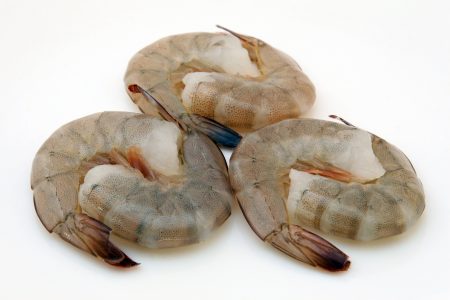

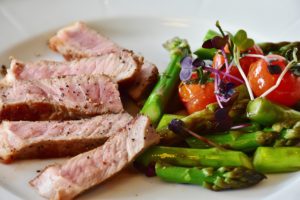
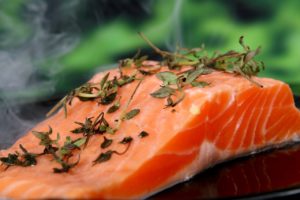
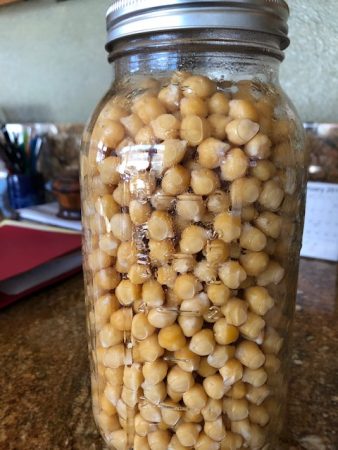
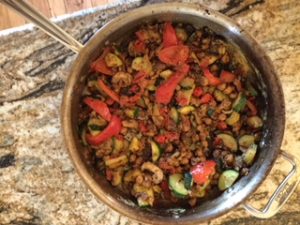
Leave A Comment
You must be logged in to post a comment.